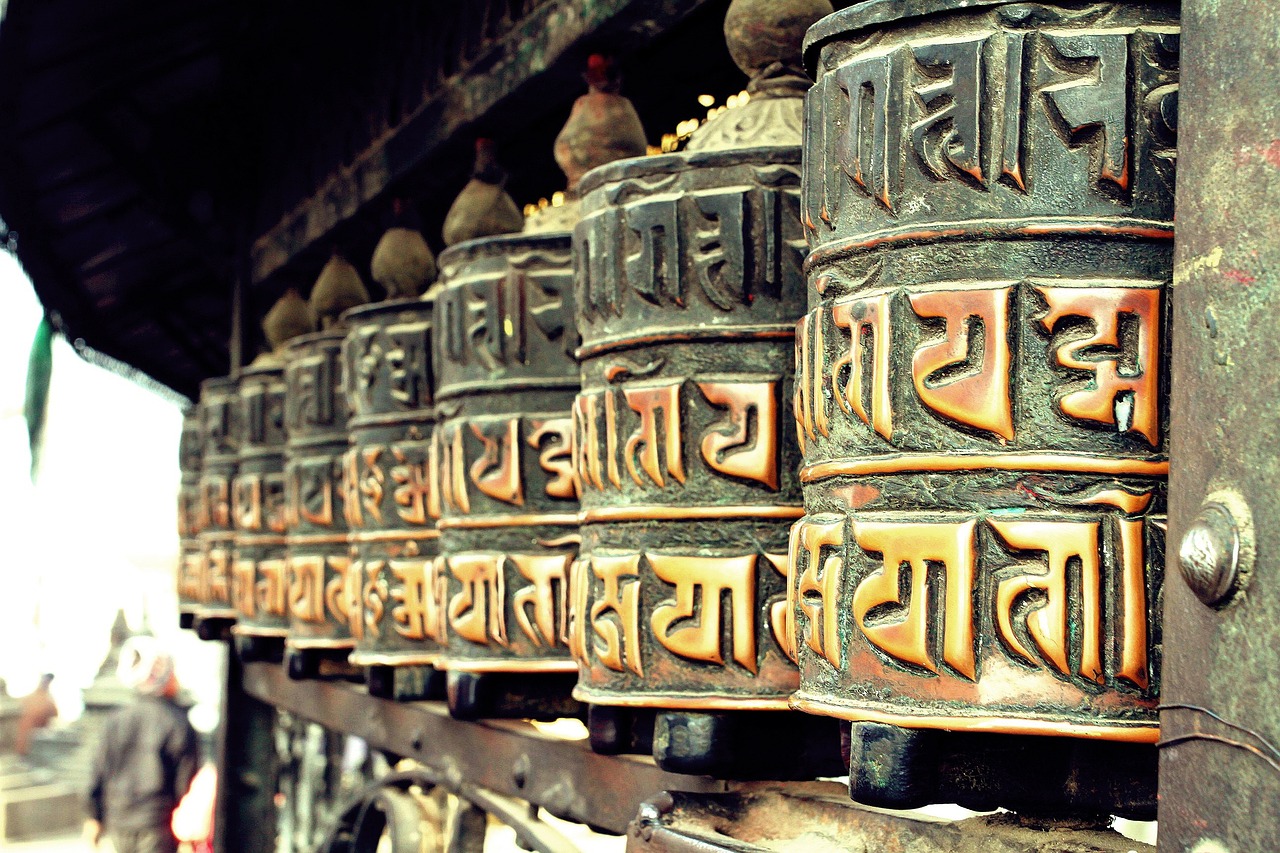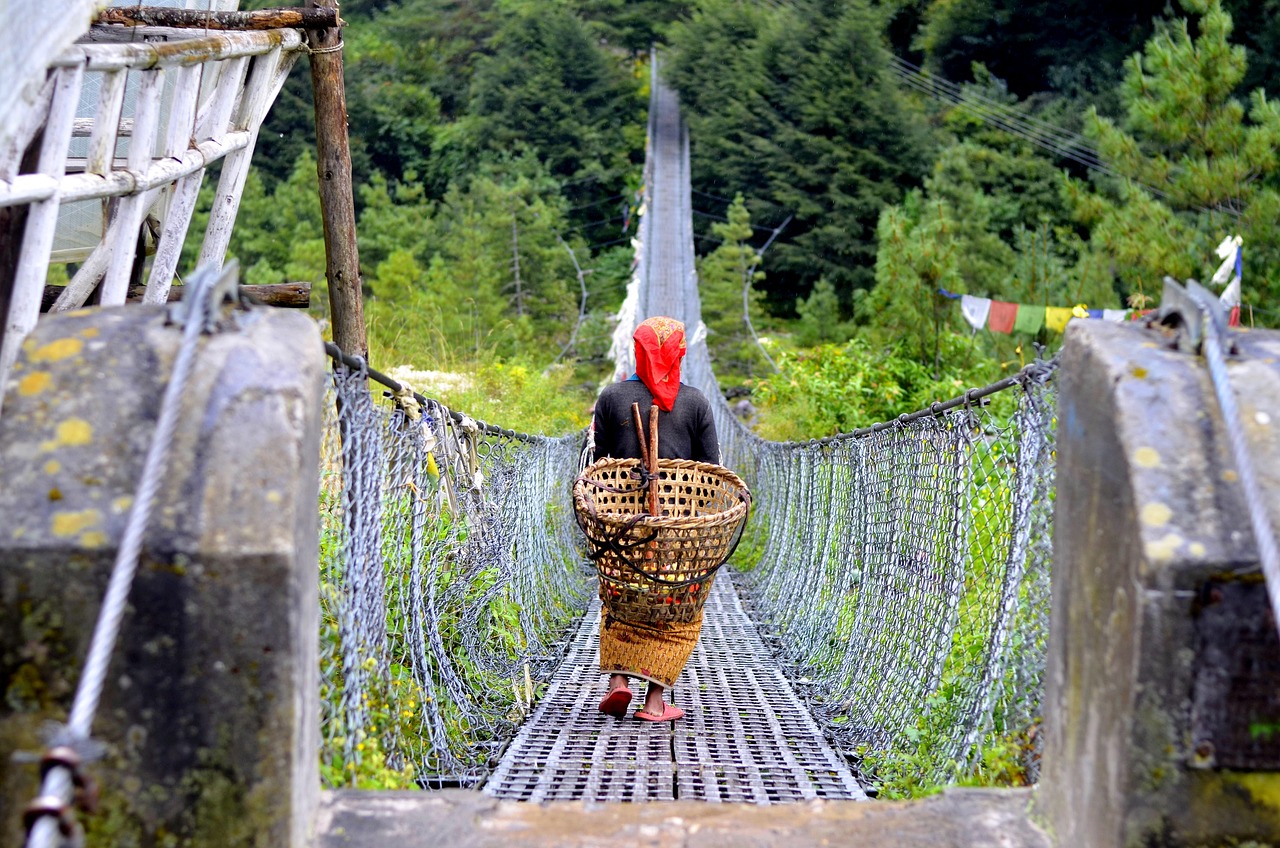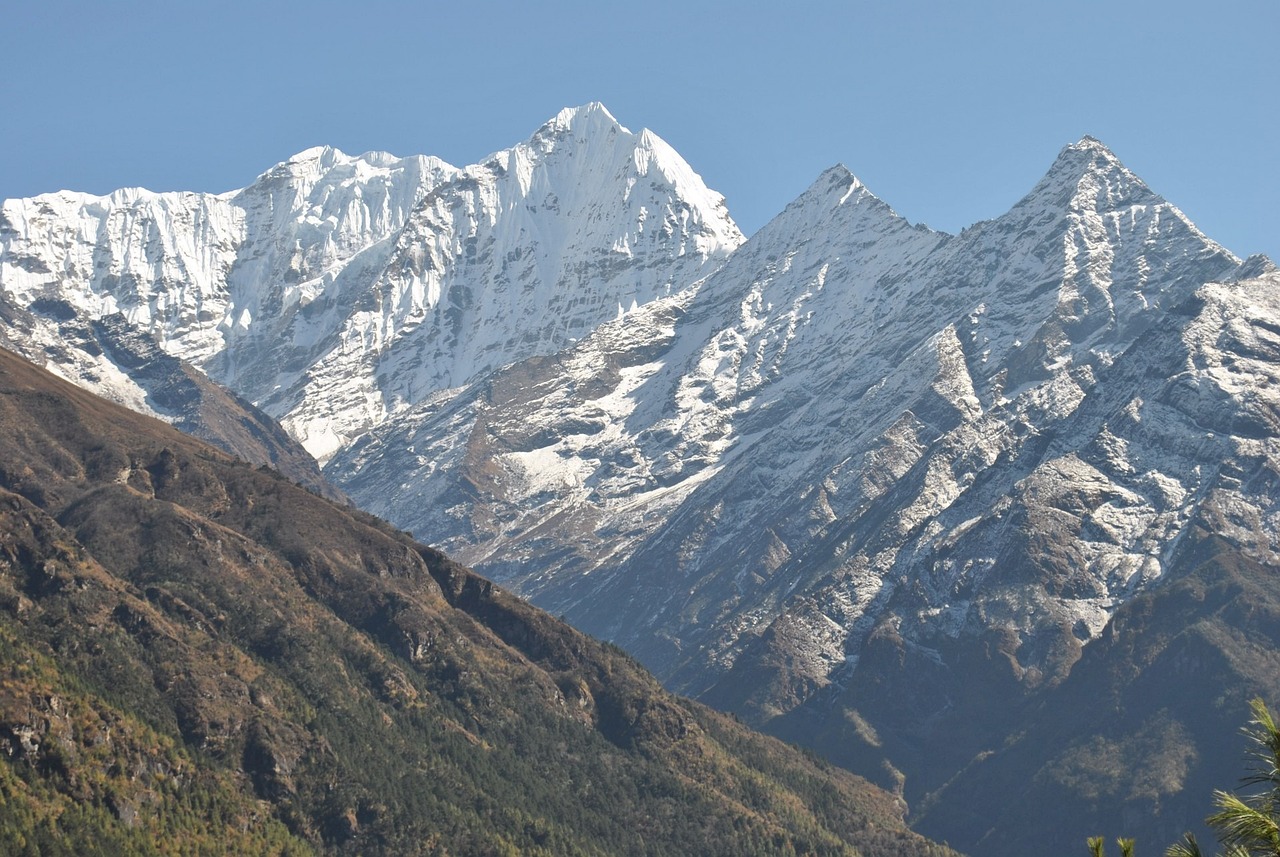Packing Essentials: Preparing for Half a Year in Nepal
Nepal, with its breathtaking landscapes, rich cultural heritage, and warm hospitality, is a dream destination for many travelers. If you’re planning to spend half a year in Nepal, it’s essential to pack wisely to ensure a comfortable and enjoyable stay. This comprehensive guide will provide you with all the necessary information on packing essentials for an extended stay in Nepal.
Section 1: Clothing
When it comes to clothing, it’s crucial to pack items suitable for Nepal’s diverse weather conditions. Here are the essential clothing items to pack:
- Layering Clothes: Pack lightweight, breathable clothing that can be easily layered for varying temperatures.
- Warm Outerwear: Include a warm jacket or coat for colder months and higher altitudes.
- Trekking Gear: If you plan to embark on treks, pack sturdy hiking boots, waterproof pants, and a backpack.
- Modest Clothing: Nepal is a conservative country, so pack modest clothing items to respect local customs.
- Comfortable Footwear: Pack comfortable walking shoes or sandals for everyday use.
Carry a mix of t-shirts, long-sleeved shirts, and sweaters or hoodies to adapt to different weather conditions.
A down jacket or a fleece-lined waterproof jacket will provide insulation and protection against the elements.
Don’t forget essentials like a hat, gloves, and a headlamp for night treks.
Long pants or skirts, and tops that cover your shoulders are appropriate for visiting religious sites and rural areas.
You’ll be doing a lot of walking in Nepal, so choose footwear that provides support and comfort.
Section 2: Travel Documents
Ensuring you have all the necessary travel documents is crucial for a smooth and hassle-free stay in Nepal. Here’s a checklist of essential travel documents:
- Passport: Make sure your passport is valid for at least six months beyond your planned departure date.
- Visa: Obtain a tourist visa for Nepal before your arrival or upon arrival at the Tribhuvan International Airport in Kathmandu.
- Identification: Carry a government-issued identification card, such as a driver’s license or a national identity card.
- Travel Insurance: Purchase comprehensive travel insurance that covers medical expenses, trip cancellation, and emergency evacuation.
- Flight Tickets: Print or save electronic copies of your flight tickets for easy access during your journey.
Carry a photocopy of your passport and keep it separate from the original.
Check the official website of the Department of Immigration Nepal for the latest visa requirements.
This can be useful for various situations, including hotel check-ins and domestic flights.
Make sure to read the policy carefully and understand the coverage.
Keep them in a secure location, along with your other important documents.
Section 3: Health and Medications
Staying healthy during your time in Nepal is essential. Here’s a list of health-related items to pack:
- Prescription Medications: If you require prescription medications, ensure you have an adequate supply for the duration of your stay.
- First Aid Kit: Pack a basic first aid kit with essentials like band-aids, antiseptic ointment, pain relievers, and any personal medications.
- Insect Repellent: Nepal is home to mosquitoes and other insects that can transmit diseases like malaria and dengue.
- Water Purification: While bottled water is readily available, it’s also wise to carry a water purification method.
- High-Altitude Medication: If you plan to visit higher altitude regions, consult your doctor about medications like Diamox for altitude sickness prevention.
Carry a copy of your prescription as well, in case you need to refill your medications in Nepal.
This will come in handy for minor injuries or illnesses.
Carry an effective insect repellent containing DEET or another recommended ingredient.
A water filter or purification tablets will ensure you have access to safe drinking water throughout your journey.
Carry them as per your doctor’s instructions.
Nepal Image 1:

Section 4: Electronics and Communication
Staying connected and having the right electronics can enhance your experience in Nepal. Consider packing the following:
- Universal Power Adapter: Nepal uses Type C, D, and M power sockets, so carry a universal power adapter to charge your devices.
- Portable Charger: A portable charger will ensure your devices stay powered during long treks or power outages.
- Smartphone: A smartphone with a local SIM card can be incredibly useful for navigation, communication, and accessing travel apps.
- Camera: Nepal’s stunning landscapes are perfect for photography enthusiasts. Pack a camera to capture your memories.
- Headphones: A good pair of headphones will enhance your travel experience, whether you’re listening to music or watching movies.
Make sure it can handle the voltage in Nepal (220-240V).
Choose one with a high capacity suitable for your needs.
Make sure your phone is unlocked before traveling.
Consider bringing extra batteries and memory cards.
Choose noise-canceling headphones for a more immersive experience.
Section 5: Money and Banking
Managing your finances and having access to money is crucial during your stay in Nepal. Here are some essential tips:
- Currency: The official currency of Nepal is the Nepalese Rupee (NPR). Carry a sufficient amount of cash for emergencies and smaller establishments that may not accept cards.
- Debit/Credit Cards: Carry internationally accepted debit or credit cards for larger purchases and emergencies.
- Money Belt: Consider using a discreet money belt to keep your cash and cards safe while exploring Nepal.
- Exchange Rates: Stay updated with the current exchange rates to ensure you receive fair value for your money.
- Budgeting: Plan your expenses and budget accordingly to make the most of your stay in Nepal.
ATMs are available in major cities and tourist areas.
Notify your bank about your travel plans to avoid any issues with card usage.
Avoid displaying large amounts of cash in public.
Exchange currency at authorized exchange counters or banks for better rates.
Consider the cost of accommodation, transportation, food, and activities.
Section 6: Local Etiquette and Cultural Considerations
Respecting local customs and traditions is essential when visiting Nepal. Here are some cultural considerations:
- Greetings: Learn a few basic Nepali greetings, such as “Namaste,” to show respect to the locals.
- Dress Modestly: As mentioned earlier, dress modestly, especially when visiting religious sites and rural areas.
- Removing Shoes: When entering temples, monasteries, or someone’s home, remove your shoes as a sign of respect.
- Photography Etiquette: Always ask for permission before photographing individuals, religious ceremonies, or sensitive locations.
- Food Etiquette: When dining with locals, use your right hand for eating, as the left hand is considered unclean.
It’s customary to greet with folded hands and a slight bow.
Avoid revealing clothing or excessive displays of affection in public.
Follow the locals’ lead and place your shoes neatly outside.
Respect any restrictions or guidelines provided by the locals.
Try local dishes and embrace the dining customs of Nepal.
Nepal Image 2:

Section 7: Transportation
Getting around Nepal requires an understanding of the available transportation options. Here’s what you need to know:
- Taxis: Taxis are available in major cities like Kathmandu and Pokhara. Negotiate the fare before starting the journey or use a metered taxi.
- Rideshares: Rideshare services like Uber and Pathao operate in Kathmandu and offer convenient and affordable transportation.
- Local Buses: Local buses are the most common mode of transportation for longer distances between cities.
- Domestic Flights: For quick access to popular tourist destinations like Pokhara and Lukla, consider domestic flights.
- Rickshaws and Tuk-tuks: In smaller towns and cities, rickshaws and tuk-tuks are a common and inexpensive mode of transportation.
Ask your hotel for an estimate of standard fares to avoid overpaying.
Download the respective app and familiarize yourself with the service.
They can be crowded and less comfortable but offer an authentic local experience.
Book in advance and check baggage restrictions with the respective airlines.
Agree on the fare before getting in and be prepared for a bumpy ride.
Section 8: Safety and Security
While Nepal is generally a safe country for travelers, it’s important to take precautions to ensure your safety. Here are some tips:
- Travel Insurance: As mentioned earlier, obtain comprehensive travel insurance that covers medical emergencies and theft.
- Emergency Contacts: Save important contact numbers, including the local police, embassy, and your accommodation, in your phone and on paper.
- Stay Alert: Be aware of your surroundings and avoid displaying valuable items or large sums of cash in public.
- Trekking Safety: If you plan to trek, hire a licensed guide and follow their advice regarding routes and safety precautions.
- Altitude Sickness: If you experience symptoms of altitude sickness, such as dizziness or shortness of breath, descend to a lower altitude and seek medical help if necessary.
Keep a copy of the policy and emergency contact numbers handy.
Inform someone about your travel plans and check-in regularly.
Keep your belongings secure and use hotel safes when available.
Carry necessary equipment and inform your accommodation about your trekking plans.
Stay hydrated and acclimatize properly during high-altitude treks.
Section 9: Language and Communication
While English is widely spoken in tourist areas, learning a few basic Nepali phrases can greatly enhance your experience. Here are some useful words and phrases:
- Namaste – Hello
- Dhanyabad – Thank you
- Kripaya – Please
- Mitho – Delicious
- Ghumna jana man lagyo – I want to go sightseeing
- Tapaiko nam ke ho? – What is your name?
- Tapasai lai kasto chha? – How are you?
- Malai bujhnus – Please help me understand
Nepal Image 3:

Section 10: Local Cuisine
Exploring the local cuisine is an integral part of any travel experience. Here are some must-try Nepali dishes:
- Dal Bhat – A traditional Nepali meal consisting of lentil soup, rice, and various side dishes.
- Momo – Steamed or fried dumplings filled with meat or vegetables, served with a spicy sauce.
- Gundruk – Fermented leafy greens, often used in soups or as a side dish.
- Thukpa – A hearty noodle soup with vegetables, meat, or eggs.
- Yomari – A sweet rice flour dumpling filled with molasses or sesame seeds, traditionally eaten during festivals.
- Choyla – Spiced grilled meat, usually made with chicken or buffalo.
- Lassi – A refreshing yogurt-based drink, often flavored with fruits or spices.
Section 11: Cultural Festivals
Nepal is known for its vibrant cultural festivals, which provide a unique insight into the local traditions and customs. Here are some notable festivals:
- Dashain – The biggest Hindu festival in Nepal, celebrated for 15 days with rituals, feasts, and the flying of kites.
- Tihar – Also known as the Festival of Lights, it involves lighting oil lamps, worshipping animals, and celebrating the bond between siblings.
- Holi – The festival of colors, where people throw colored powders and water at each other to celebrate the arrival of spring.
- Bisket Jatra – A unique festival in Bhaktapur, featuring a chariot procession, tug-of-war, and the raising of a ceremonial pole.
- Indra Jatra – Honoring the rain god Indra, this festival involves masked dances, music, and the display of the Kumari, the living goddess.
- Losar – The Tibetan New Year, celebrated by the Tibetan community in Nepal with prayer ceremonies, rituals, and cultural performances.
Section 12: Conclusion
Preparing for a half-year stay in Nepal requires careful planning and packing. By considering the clothing, travel documents, health and medications, electronics, money and banking, local etiquette, transportation, safety, language and communication, local cuisine, cultural festivals, and more, you’ll be well-prepared to make the most of your extended stay in the beautiful country of Nepal.
References
1. Department of Immigration Nepal – www.nepalimmigration.gov.np
2. Lonely Planet – www.lonelyplanet.com
3. Nepal Tourism Board – www.welcomenepal.com
4. Nepal Embassy – www.nepalembassyusa.org
5. Centers for Disease Control and Prevention – www.cdc.gov
6. Nepal Rastra Bank – www.nrb.org.np


